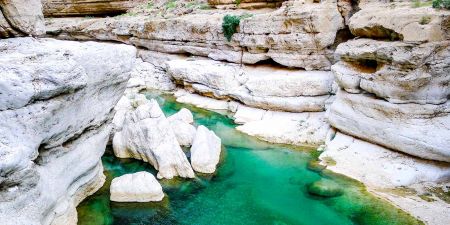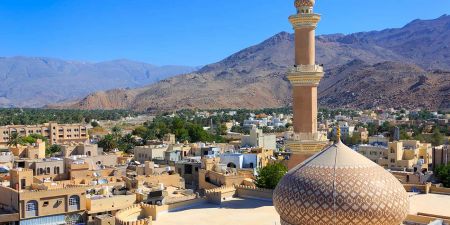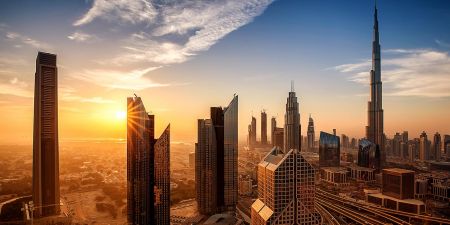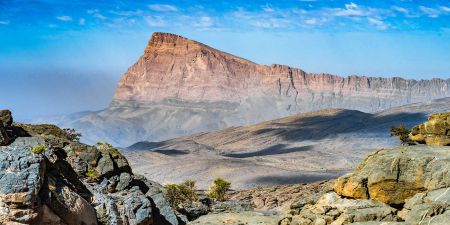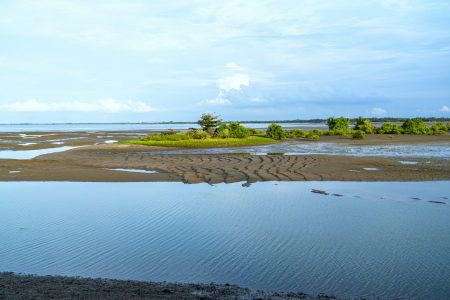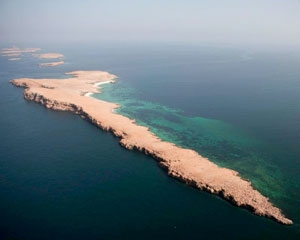Barr Al Hikman
Discover the untouched beauty of Barr Al Hikman, a pristine coastal paradise in Oman known for its vast salt flats, thriving marine life, and migratory bird populations. This breathtaking peninsula features turquoise lagoons, white sandy beaches, and rich biodiversity, making it a haven for nature lovers, birdwatchers, and adventure seekers. Explore its unique landscapes by 4x4, kayak through serene waters, or witness flamingos, turtles, and dugongs in their natural habitat. A must-visit for eco-tourism and off-the-beaten-path experiences!

Barr al Hikman, the Middle East's longest natural sand bar, remains one of those rare gems that still eludes mass tourism despite being often compared to the Maldives. I discovered this stunning 2,900 km² tidal plain—Oman's largest—with its pristine white sandy beaches and crystal-clear waters that truly rival more famous tropical destinations.
Recently designated as a Ramsar site in October 2023, Barr al Hikman Oman sits approximately 450 km south of Muscat, requiring a five-hour journey through the majestic Hajar Mountains and past the Wahiba Sands desert. During my visit, I was amazed by the peaceful atmosphere and breathtaking sunsets that transform this remote beach into a little paradise. However, what makes this location truly special is not just its beauty but also its significance as a haven for dozens of migratory bird species from autumn to spring, alongside unique wildlife including various crabs and fish species.
In this guide, we'll explore everything you need to know about this hidden treasure, from navigating the challenging salt flats to experiencing the off-grid adventures like paddleboarding, kayaking, and snorkeling in the lagoon's clear waters.
What Makes Barr Al Hikman Special?
The limestone peninsula of Barr Al Hikman stretches across 900 square kilometers of Oman's southeastern coastline, creating one of the most ecologically significant yet undiscovered treasures in the Arabian Peninsula. Walking along its shores, I found myself immersed in a landscape unlike any other in the region.
A unique tidal plain in Oman
Barr Al Hikman stands as the Middle East's longest natural sand bar and Oman's largest tidal plain, covering an impressive 2,621 square kilometers. What makes this area truly remarkable is its diverse geological composition—coastal and inland salt plains (locally called sabkha), extensive mudflats, and shallow salt-water lagoons.
The peninsula extends approximately 30 kilometers into the Arabian Sea, creating a fascinating environment where tidal patterns shape the landscape. At peak tides, seawater advances hundreds of meters inland, forming temporary lakes that quickly evaporate in summer, leaving behind commercially valuable salt deposits.
The unique ecosystem consists of three interconnected habitats:
- Coastal sabkhas (salt flats)
- Intertidal mudflats
- Offshore waters
Why it's called the 'Maldives of Oman'
The moment you arrive at Barr Al Hikman, the nickname "Maldives of Oman" immediately makes sense. The dazzling white sandy beaches meet the duck egg blue waters of the Arabian Sea, creating a visual spectacle reminiscent of tropical paradise.
Unlike the actual Maldives, nevertheless, this hidden gem remains wonderfully undeveloped. Instead of beach bars and overwater villas, I discovered a pristine landscape where nature rules supreme. The synchrony of mangroves, lagoons, and salt flats creates an almost otherworldly atmosphere.
Furthermore, the lack of wifi or phone network enhances the experience, encouraging visitors to disconnect from technology and connect with nature. When standing at the wooden steps of the stilted accommodations, I could see fish swimming everywhere in the crystal-clear waters below—from tiny minnows to larger species.
Wildlife and bird migration hotspot
Essentially, Barr Al Hikman functions as an irreplaceable ecological sanctuary. The site has been recognized as one of Oman's most important biodiversity hotspots and holds global significance for migratory birds.
The wetland serves as a vital rest stop for more than half a million birds along the West Asian-East African Flyway. In fact, researchers recorded 63 waterbird species at the site between 2017-2019, with birds arriving from as far as Siberia's northern shores.
Notably, the intertidal mudflats boast some of the highest shorebird densities globally. Species like the Near Threatened Curlew Sandpiper travel an astounding 6,000 kilometers from Siberian tundra to Barr Al Hikman before continuing another 6,000 kilometers to South Africa.
Beyond birds, the area teems with marine life. The mudflats alone host nearly thirty crab species, while the bay attracts whales and dolphins. Four threatened sea turtle species nest on its shores, alongside fascinating invertebrates like the Red-eyed Rock Crab.
How to Reach Barr Al Hikman Safely
Reaching the remote beauty of Barr Al Hikman requires careful planning and preparation, as this isolated stretch of paradise sits far from Oman's tourist infrastructure.
Driving from Muscat or Salalah
The journey to Barr Al Hikman spans approximately 450km south of Muscat or 800km north from Salalah. Initially, your adventure takes you through the spectacular Hajar Mountains, past the Wahiba Sands desert, and across long dry plains where camels roam freely and heat haze shimmers on the highway.
Throughout the route, you'll find petrol stations and small towns for refueling and supplies. Specifically, Lulu Hypermarket at Samad Al Shan on Route 27 marks the last major shopping opportunity. After roughly four hours of driving (plus breaks), you'll arrive at Mahout, a crossroads town serving as your final stop for provisions.
Why a guide is essential
A local guide is absolutely crucial for navigating Barr Al Hikman safely. Even experienced off-road drivers can easily become disoriented or stuck while crossing this challenging terrain. Additionally, cell phone coverage is non-existent throughout the peninsula, leaving you vulnerable if problems arise.
The landscape appears deceptively simple—flat, hard, and barren—yet contains hidden dangers. Previously, visitors have abandoned vehicles stuck axle-deep in mud. Furthermore, traveling alone or at night is extremely hazardous.
Crossing the salt flats
The sabkha (salt flats) present unique challenges because five inlets feed the area, creating constantly changing conditions with the tides. Following rain, large patches of sticky mud form unexpectedly.
The salt-crusted surface glistens enticingly, yet beneath this crust often lies wet sand that can collapse under a vehicle's weight. Consequently, only 4WD vehicles should attempt the crossing, preferably traveling in convoy rather than single vehicles.
With a knowledgeable guide, you'll navigate a safe path as they sometimes wade through water to verify the firmness of the ground before proceeding. Eventually, the seemingly endless terrain opens to reveal stunning seascapes with dunes and powdery beaches.
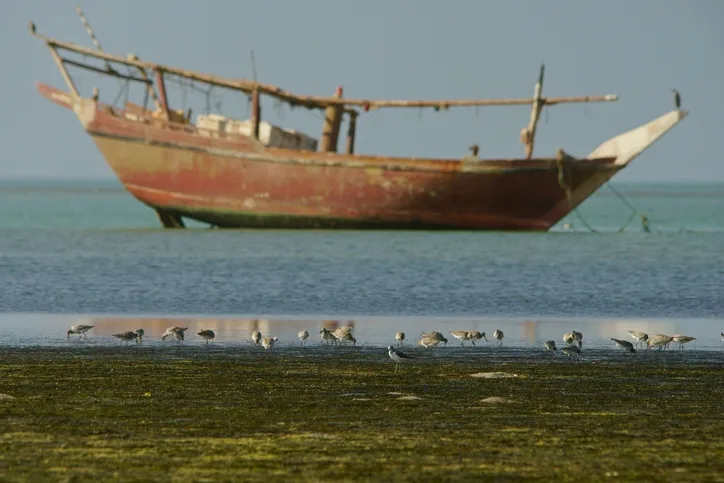
Things to Do at Barr Al Hikman
Once you arrive at this secluded coastal wonder, a world of off-grid adventures awaits. The pristine environment of Barr Al Hikman offers unique activities that combine relaxation with nature exploration.
Wild camping and glamping options
Unplugged adventures define the Barr Al Hikman experience. You can wild camp anywhere for up to two nights, provided you're off the road and away from permanent dwellings. For those seeking more comfort, glamping options range from luxury VIP setups to standard tents. Whales Head Camp, nestled between sea and dunes, offers Bedouin-style tents with proper beds and access to basic shared facilities. Remember to pack bedding, towels, and essentials like torches and folding chairs as there's no electricity, air conditioning, or phone signal.
Paddleboarding and kayaking in the lagoon
Throughout the year, the butter-flat lagoons create ideal conditions for paddleboarding and kayaking. Early mornings especially provide perfect conditions—calm waters and pleasant temperatures. Some accommodations offer equipment rentals, including a unique transparent kayak that allows glimpses of marine life below.
Snorkeling and spotting marine life
Although the lagoon itself houses fish visible from accommodations, the best snorkeling spots lie offshore. A 30-minute boat ride takes you to vibrant coral reefs where flying fish, turtles, and various marine species flourish. The area boasts diverse marine ecosystems, particularly attractive to underwater photographers.
Birdwatching during migration season
Barr Al Hikman stands as one of Oman's most important bird migration stations. Countless water birds congregate here from autumn to spring, traveling approximately 5,000 kilometers from places as distant as northern Siberia. Species include Crab Plover, Eurasian Oystercatcher, Black-Winged Stilt, and numerous others.
Kitesurfing in summer
From May through September, Barr Al Hikman transforms into a kitesurfer's paradise with consistent winds from the Khareef (monsoon):
- July-August: strongest winds (25-40 knots) with temperatures of 18-25°C
- May-June-September: lighter winds (15-25 knots) with temperatures of 25-30°C
The flat, waist-deep waters make this location perfect for beginners learning kitesurfing and experienced riders alike.
Tips for a Responsible Visit
Preparing for an adventure to Barr Al Hikman requires thoughtful planning, as this remote destination demands respect for both nature and your personal comfort.
Best time to visit
Throughout the year, Barr Al Hikman enjoys milder summer temperatures than Muscat thanks to monsoon currents from the south. For wild camping enthusiasts and birdwatchers, October through March offers cooler, calmer weather—ideal for observing migratory birds. Conversely, kitesurfing aficionados should visit between April and September when perfect winds prevail.
According to wind sports experts, May through September is generally considered the prime visiting period, with temperatures ranging from 18-30°C and water temperatures between 20-30°C. Wind conditions vary by month:
- July-August: Expect powerful winds (25-40 knots)
- May-June-September: Gentler breezes (15-25 knots)
What to pack and bring
Given Barr Al Hikman's isolation, comprehensive packing is essential. Above all, bring sufficient food and water for your entire stay, as the area lacks shops or restaurants. Likewise, pack extra shade structures since midday sun is intense with no natural shelter.
Other critical items include:
- Beach shoes (protects feet from scorching sand and sharp coral)
- GPS device with pre-downloaded routes/SOS capability
- Sun protection (polarized sunglasses and high SPF sunscreen)
- Water filtration system
- External battery packs (no electricity available)
- Headlamp or flashlight
- First aid kit
- Sleeping bag appropriate for season
For overnight stays, pack dry underlayers as temperatures drop quickly after sunset.
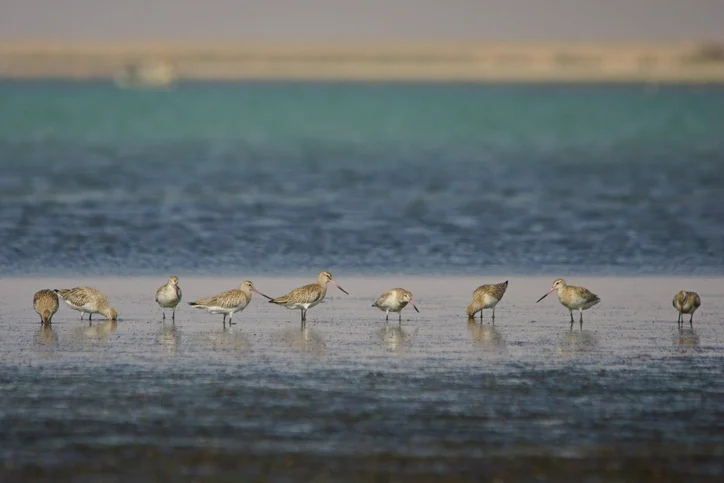
What to pack and bring
Given Barr Al Hikman's isolation, comprehensive packing is essential. Above all, bring sufficient food and water for your entire stay, as the area lacks shops or restaurants. Likewise, pack extra shade structures since midday sun is intense with no natural shelter.
Other critical items include:
- Beach shoes (protects feet from scorching sand and sharp coral)
- GPS device with pre-downloaded routes/SOS capability
- Sun protection (polarized sunglasses and high SPF sunscreen)
- Water filtration system
- External battery packs (no electricity available)
- Headlamp or flashlight
- First aid kit
- Sleeping bag appropriate for season
For overnight stays, pack dry underlayers as temperatures drop quickly after sunset.
Dealing with waste and preserving the environment
Sadly, human impact is visible at Barr Al Hikman primarily through discarded fishing equipment—plastic bottles, white ice sacks, and ghost nets. As visitors, we bear responsibility for preserving this extraordinary ecosystem.
The "pack it in, pack it out" principle applies strictly here. Bring sufficient bags to carry all your waste back with you, considering that no disposal facilities exist on site. Additionally, minimize single-use plastics by using reusable containers and water bottles.
Should you encounter manageable amounts of existing waste during your visit, consider collecting it—every small action helps protect this fragile environment from being overwhelmed by pollution, ensuring future visitors can enjoy its pristine beauty.
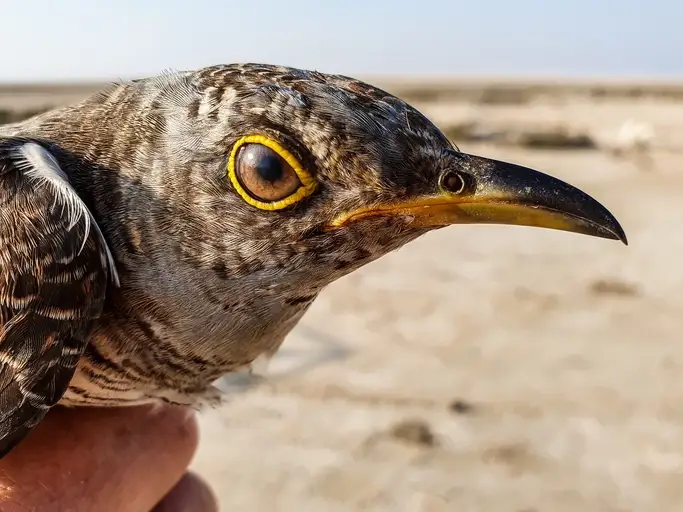
Customize Your Dream Vacation!
Get in touch with our local experts for an unforgettable journey.
Plan Your TripConclusion
Barr Al Hikman stands as a testament to Oman's untouched natural wonders, offering a rare glimpse into paradise without the commercial trappings of famous beach destinations. My journey across the challenging salt flats certainly demanded preparation and respect for the elements, though the reward proved undeniably worth every effort. Those pristine white beaches meeting crystal-clear waters create memories that remain long after the adventure ends.
Throughout my exploration, the ecological significance of this hidden gem became increasingly apparent. The peninsula serves not merely as a beautiful landscape but also as a critical sanctuary for countless migratory birds and marine species. This delicate ecosystem, therefore, deserves our utmost respect and protection during visits.
Whether you seek the adrenaline rush of kitesurfing during summer winds, the tranquility of paddleboarding across glass-like lagoons, or the wonder of observing thousands of birds during migration season, Barr Al Hikman delivers experiences impossible to find elsewhere in the region.
First-time visitors should remember this paradise demands self-sufficiency. Pack thoroughly, follow safety guidelines, and above all, travel with experienced guides. Additionally, the lack of connectivity offers a rare chance to disconnect from digital life and reconnect with nature's rhythms.
Last but certainly not least, we must acknowledge our responsibility toward preserving this ecological treasure. The growing recognition of Barr Al Hikman's importance—evidenced by its recent Ramsar designation—highlights why sustainable visitation practices matter so greatly. This hidden Omani paradise has flourished precisely because it remains relatively undiscovered. Consequently, those fortunate enough to experience its beauty share an obligation to ensure it stays pristine for generations to come.
FAQs
1. Where is Barr Al Hikman located and how can I get there?
Barr Al Hikman is located approximately 450 km south of Muscat, Oman. To reach this remote destination, you'll need to drive for about five hours through the Hajar Mountains and past the Wahiba Sands desert. It's essential to have a 4WD vehicle and travel with an experienced local guide due to the challenging terrain.
2. What makes Barr Al Hikman unique compared to other beach destinations?
Barr Al Hikman is known as the "Maldives of Oman" due to its pristine white sandy beaches and crystal-clear waters. However, it remains largely undeveloped, offering a truly off-grid experience. The area is also a significant ecological site, serving as a crucial stopover for migratory birds and home to diverse marine life.
3. What activities can visitors enjoy at Barr Al Hikman?
Visitors can enjoy a range of activities including wild camping, glamping, paddleboarding, kayaking, snorkeling, birdwatching, and kitesurfing. The area is particularly popular for water sports, with ideal conditions for kitesurfing during the summer months and excellent opportunities for wildlife observation year-round.
4. When is the best time to visit Barr Al Hikman?
The best time to visit depends on your interests. For wild camping and birdwatching, October through March offers cooler weather. Kitesurfing enthusiasts should visit between April and September for optimal wind conditions. Generally, May through September is considered the prime visiting period with pleasant temperatures and good weather conditions.
5. How can visitors help preserve the environment at Barr Al Hikman?
Visitors can help preserve this fragile ecosystem by following the "pack it in, pack it out" principle, minimizing the use of single-use plastics, and properly disposing of all waste. It's also helpful to collect any manageable existing waste you encounter during your visit. Remember to respect the natural habitat and wildlife, ensuring this pristine environment remains intact for future generations.
From Majestic Mountains to Turquoise Coastlines, Plan Your Dream Oman Trip Now!


